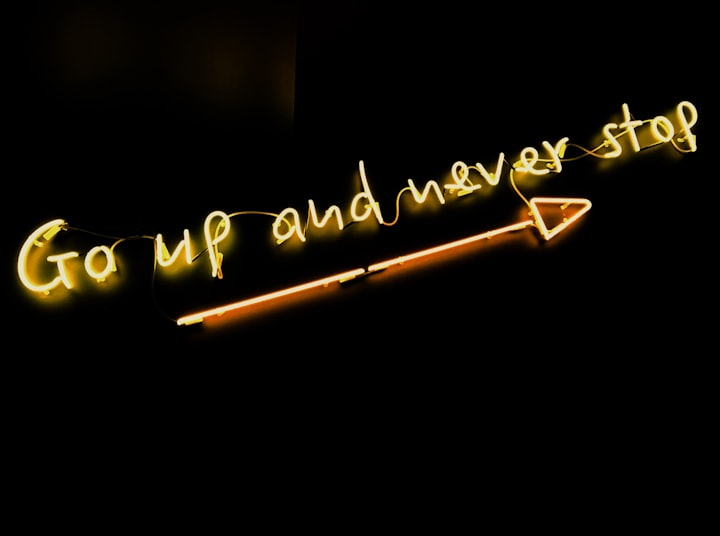How I Picked My First 3 Stocks to Buy Using the Stash App (A Newbie Investor’s Tale)
The Serenity Project: Just a White-Trash Kid Winning the Wealth-Building Game

So if I'm going to champion an experiment in buying fractional shares as a low-income investor, in hopes of seeing bottom-rung earners empowered to rise up and take ownership in the capitalist stakes we're all playing anyway, where do I start?
The right tools are essential to even try. For years, I’ve been wracking my brain, examining my life experiences, watching the world around me, connecting the dots, asking myself what it is people need to know in order to turn the tables—praying for some vast door to open in a way I couldn’t even imagine yet.
Well… on January 1st, 2021, I heard about the Stash app for beginner investors. I didn’t think much of it at first. I certainly didn’t expect it to revolutionize my New Year. I had no idea how quickly one download would start to change my entire attitude and outlook about economic leverage, the stock market, and empowering people for real life change.
The following is based on personal opinions and personal experiences, and should not, under any circumstances, be considered professional investment advice. Always do your own research before making financial decisions. Please note no views or opinions of the author are endorsed by any other party mentioned herein. (I doubt they even know I exist.)
So what is Stash all about? From the FAQs...
Stash’s mission is to make personal finance a source of hope, not fear.
Unlike a lot of financial companies, we’re here to help you build strong habits and hit financial goals. That’s why we’ve built Stash into an all-in-one financial home that uses advice and technology to help anyone create a better life—no matter their network or net worth.
To fulfill our mission, we’re focused on four major issues: predatory hidden fees, lack of financial education, intentional complexity, and unfair barriers to entry.
Can I just say this mission makes my heart so happy? Especially addressing that "unfair barriers to entry" part.
You see, before this year, I've never exactly followed stock market news. It wasn’t a thing in my life. I always figured it was pointless. Investing is for rich people, right? With that kind of thinking, I’ve ruled myself out of an awful lotta opportunities. I’ve rolled my eyes at the stock market for my entire working life, in fact—up until January 1st of this year, anyway.
Then a TV commercial for the Stash app started to transform the way I think about wealth-building for everyday Americans. And from there began The Serenity Project—an experiment in winning the wealth-building game. (You can read more about my “why” behind this journey right here.)
So with all of that in mind, how did I pick my first few stock buys? If one is going to start learning about investing as a 30-something Millennial who's already late to the game, where does one turn for information?
Okay, it's not like I didn't have at least a few preconceived clues about which companies might be successful. I'm not usually one to spend a ton of time clicking from headline to headline, but I skim the top stories on my Google feed just like anybody else. So I had a few obvious names in mind for my first handful of investments.
I hope you weren't anticipating any highly specialized formulas or algorithms here, folks. Within an hour or so of seeing my first Stash transfer completed, my buying spree went a little like this...
First thing first, I bought a couple bucks' worth of Amazon, because Amazon.
Second, I bought a matching amount's worth of Tesla, because I happened to read recently that Tesla's Elon Musk is richer than Amazon's Jeff Bezos now. See, we small-town South Dakota people aren't completely oblivious to what's going on in the world.
(That said, I've since read that Tesla "might just be the most overvalued large-cap stock in existence," according to a list of "Stocks to Avoid Like the Plague in 2021," which goes to show the importance of continuous research and evaluation to keep making smarter, more informed choices along the way.)
And third, I searched in the Stash app for marijuana themed investments, because my home state of South Dakota just legalized medical and recreational pot this past voting season, and I saw a rumor somewhere on Facebook (probably in a sponsored post, no doubt) that before we know it, the weed industry will be worth $46 billion, or something like that. I don’t even know if $46 billion is a lot of money or not, especially since we were just talking about Elon Musk and his $185 billion, but hey, everybody has to start somewhere, right?
Yep, that's the extent of the information I decided to go on as a first-time micro-investing curiosity seeker. Heckuva wealth-building strategy, huh? Don't worry, it gets better after this.
For instance, notice one important building block here. When I typed the word marijuana into the Stash app and clicked the search button, this represented the very first intentional action I've ever taken to research and compare stocks in companies I didn't know about before. By using tools made available and accessible to me, I relied on the performance overviews provided in the Stash app to select a company called Tilray as my pot stock of choice. Access to this kind of information on like 1,800 or so stocks is one of the in-app resources that helps make it easy to learn about potential investments, right from your smartphone.
By the way, why did I choose Tilray? Well, I'm glad you asked. You see, of the options that came up in the Stash search, I picked this one based on the company's emphasis in pharmaceuticals. Why? Because… hold on, we're gonna get super savvy here for a minute… because pharmaceutical companies are freakin' rich, duh.
Real sophisticated reasoning, for a first-timer. Did I mention I'm not a financial expert? That's why The Serenity Project is an experiment. I started with no idea what I'm doing and no clue if any of this will work or not. My beginner logic was based on the same general awareness and vague understandings that anyone who doesn't follow the market and hasn't been taught how to invest might pick up from a casual acquaintance with the internet.
Going in, I fully expect I'll be making rookie mistakes for a while. I imagine I'll lose some money on a few things. More seasoned traders will cackle at the misfortunes of yet another individual Millennial investor who thought she could Google her way to prosperity.
But meanwhile... let’s remember the Stash app also lets you earn stock rewards on the normal purchases you're making anyway. So if you don't have enough money in the bank to risk losing any of it, no matter how much it might pay off in the end, you can still start building a portfolio with fractional shares that can grow over time, almost for free. (I mean, as little as $1 a month is about as close to a free service as you can get.) And you can do it with nothing more than your regular spending behavior to fuel your earnings.
Yes, my first few stock buys were based totally on hearsay and gut reads, just chasing after the wind—I'll never try to pretend otherwise. (I'm happy to report my choice of pot stock is my best-performing investment so far, thank you very much. But of course, in the time since I bought into the marijuana industry, I've read that's probably a rookie mistake I'll regret later, too, so who knows. Do your homework, kids.)
My point is, I have nothing to hide here. I'm learning as I go, using myself as my own guinea pig. The internet has promised me the do-it-yourself hand-holding and all the financial technology I need to begin changing my fortunes for the good of greater society. So I'm going to see what happens.
Remember, I didn’t plan this. Blogging about micro-investing is pretty much the last possible creative vision I ever would’ve had in mind for 2021. That’s why I’m still kinda asking if this must be a God thing.
You see, a few days into the experiment, with my first few investments made basically on a whim, I was $15 in and figured that'd be about as far as I went. But I didn't stop there. Something made me more curious—for some reason, I felt compelled to keep poking around in the Stash app.
And as I did, I started to get more intrigued by the many different things the app can do... like help with automating investing for the long term, gradually rounding up fractional shares and building over time. Every little bit counts, as they say, and when it comes to saving, I for one am a fan of the "set it and forget it" strategy.
While I continued to spend more time in the app, clicking the little "learn more" icons, something peculiar started happening. I found myself getting more interested in the world of stocks, bonds, and ETFs... and a lot more excited about the wealth-building capabilities made available through Stash. Not just for me, but for humanity.
Over the next few days, and then over the first two weeks of the New Year, I kept catching myself on my phone, sneaking in some research here and there, gauging attractive stock picks and looking up definitions of financial terms I didn't know. Listen.... never in a million years would I have ever expected that this is how I’d be spending my free time in the middle of a global pandemic.
Today, less than three weeks into the experiment, I already know a lot more than I did when I started. My approach to stock research has already begun to mature. I had to start somewhere, and from there, I’m already developing my approach. Next time, I’ll tell you how I began to diversify my portfolio and get serious about winning the wealth-building game. For now, I just want to say I'm glad I started at all.
In the year ahead, I plan to continue writing about my experiences as a beginner micro-investor, using the Stash app to build a portfolio in the stock market. I’m not saying you should do it, too—I’m just gonna try it myself and let you know what happens. I’m learning as I go, so if you’d like to come along for the ride, we’ll be learning together, hopefully doing our small part to turn the tables and win the wealth-building game, for the good of greater society.
Does that sound overly ambitious to you? Maybe we just haven't allowed ourselves to think big enough before.
If you like anything you read here, please share this article with your social media networks to get more people thinking about how we can all start winning the wealth-building game. Like to connect? Drop me a line: jeanmillersays {at} gmail.com.
About the Creator
Jean Miller
Home of The Serenity Project: #whitetrash kid winning the #wealthbuilding game. | Uneducated Galilean | Micah 6:8 | Sober 10+ | #hopewriters






Comments
There are no comments for this story
Be the first to respond and start the conversation.